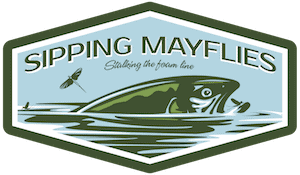The Best Brown Trout Flies and Patterns
July 19th, 2022
I chase brown trout on flies almost every week, and sometimes several times per week. I’ve tried every pattern you can reasonably imagine, and the bottom line is that there are several fly patterns that stand above the rest. The major producers.
But who should you listen to? Opinions are everywhere.
Let me attempt to gain some credibility with you.
How many browns do I catch? Probably well over 2,000 over the past year. Most were in the 12-14 inch range, many were in the 15-18 inch range, and plenty were in the 20+ inch range.
In the below article, I’m going to share with you the best flies for catching brown trout, based upon my experience. We’ll touch on dry flies, wet flies, streamers, and nymphs.
Here’s a big brown trout I caught on a small dry fly in March.

Does Seasonality Matter?
I’ve had tremendous success catching Brown trout (Salmo trutta) both on the surface and below the surface year-round. My personal preference is dry flies, and that’s what I use whenever feasible, but browns are indescriminate eaters in my experience.
Here are some of my observations regarding the different seasons.
Winter Fly Patterns
During the wintertime (January through March), the water temperatures are understandably cooler, even in tailwaters, and the brown trout won’t want to chase your flies. They’re eating consistently, but they’re also conserving energy.
I once heard an angler say winter is streamer time, and that just hasn’t been my experience at all.
Trout want their meals to hit them on the nose. So, winter is nymph, wet fly, and occasional dry fly (during hatches) season.
The hatches to watch for during winter are BWOs (Blue-winged olives) and midges.
Spring Fly Patterns
Springtime (April through June) brings warmer water and more insect activity. This of course translates to more active brown trout.
My favorite flies to cast during spring are dry flies, but nymphs and wet flies are even more productive. Streamers can work, but most fish still aren’t in a mood to chase, at least not until late spring.
Summer Fly Patterns
In my opinion, summer (July through September) is the best season to fly fish for brown trout.
Big fly patterns like hoppers will work wonders (since grasshoppers are everywhere), as will streamers, nymphs, and wet flies. Cast whatever you enjoy most.
Fall Fly Patterns
Fall is when wild brown trout spawn, usually during October and November, but sometimes into December. You need to learn to recognize a redd (spawning bed for browns), and avoid walking through them or casting to spawning females.
Some people claim female browns on a redd will eat anything that crosses their path, but that’s simply not true. Regardless, if you have a conscience, don’t disturb them.
Dry flies and streamers work exceptionally well during fall, and nymphs and wet flies will hammer them too. It’s a fantastic season.
Here’s a fat brown trout I caught on an elk hair caddis fly in April.
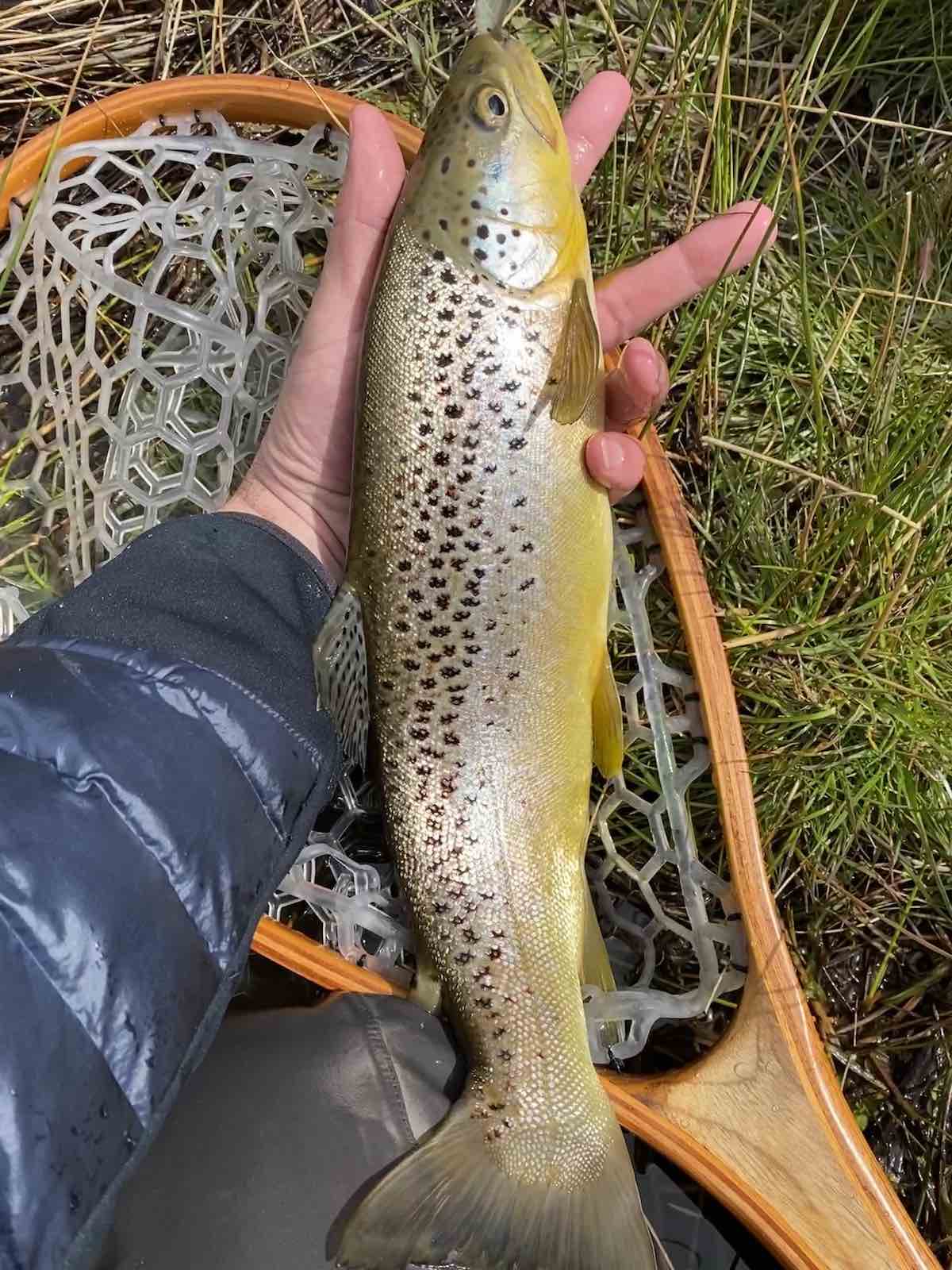
The Best Brown Trout Flies
I’ll divide this section up into the following categories: dry flies, wet flies, nymphs, and streamers.
I can personally vouch for all of these fly patterns. They’re the top 1% in my experience. Nothing eclipses their production.
These flies will work on brown trout from the big rivers of California to the small streams of New Hampshire, as well as around the world.
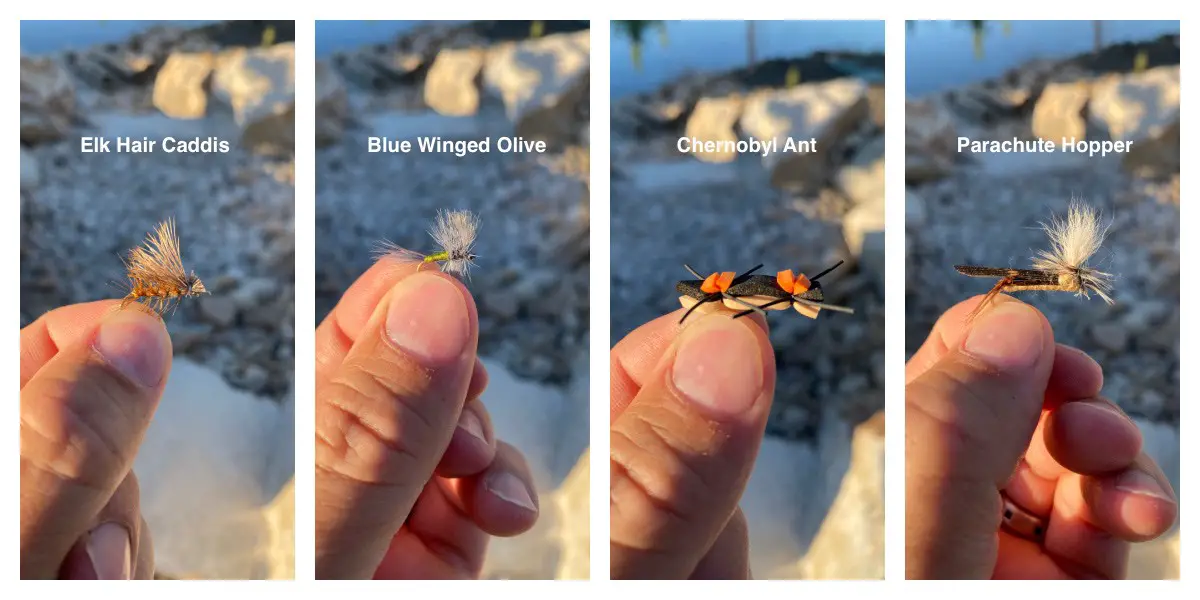
Dry Flies for Brown Trout
There’s not much more thrilling on the water than watching a big brown trout rise and sip in your dry fly. It’s electrifying.
Learning to cast accurately, avoiding drag, and mending effectively are all required in addition to selecting the right fly pattern.
Here are some of my absolute favorite brown trout dry flies.
Elk Hair Caddis
I mentioned in my article on fly fishing for brown trout that the elk hair caddis pattern doesn’t just imitate a caddisfly, it can effectively imitate a moth, grasshopper, spider, and more.
It’s a hugely versatile pattern that works on most waters in my experience. It’s not all that productive during winter and early spring, but it can be deadly from late spring through summer and fall.
The best size for browns is dependent upon what you’re trying to imitate, but generally I use this fly in sizes 12-16. You can get the exact pattern on this page at Amazon.
Blue Winged Olive (BWO)
This is my go-to fly during the winter, when blue winged olive mayflies are hatching. They hatch year-round, but during the winter there are basically only two types of hatches you’re going to see regularly: BWOs and midges.
Use this fly in the standard coloration (olive body with blue wings), and match the size of the hatching maflies–usually sizes 18-22. This fly is a real producer, and you can read more about it in my article on how to fish BWOs.
Chernobyl Ant
One nice fringe benefit of using a foam-based fly like the chernobyl ant is that you’ll never get it to sink. You don’t apply floatant to it, either. It floats indefinitely.
This pattern works well during late spring and through summer and fall, when you can find big ants, grasshoppers, spiders, and other terrestrial insects in and around the river.
In my experience, browns seem to prefer this fly in sizes 8-12.
Hoppers
Hopper patterns are synonymous with catching summer and fall brown trout.
I’ve spent countless hours casting hoppers to brown trout and I’ve learned that they’ll rise to, but often reject, hoppers that don’t look like the live grasshoppers they’re used to eating. Because of this, I highly recommend buying an assortment, like this one on Amazon.
On some of the rivers I fly fish on, the grasshopper populations are nothing short of biblical, and this has afforded me plenty of time to experiment. The bottom-line is, “match the hatch.”
Here’s a trick I learned.
While I was walking along the rocky edge of a local river, grasshoppers would jump haphazardly into the water to get away from me. A few seconds later, brown trout would annihilate the helpless grasshoppers being carries by the current downstream. It was entertaining if nothing else.
I’d only caught a few browns on the hopper patterns I had with me, I believe it was because they didn’t look much like the live grasshoppers I was seeing around me.
So, I decided to scare some grasshoppers into the water, and cast my hopper pattern in amongst them.
Sure enough, in the feeding frenzy that ensued, I landed a big brown.
It didn’t work on every cast, but it worked often enough that it was clear the browns were less selective during the feeding frenzy.
Speaking of flies, don’t miss my article on my favorite fly fishing slingpack of all time.

Nymphs for Brown Trout
It’s been said countless times that trout eat below the surface 90% of the time. I think that statistic is wrong, especially if you consider fish eating emergers as surface feeding (as I do).
Regardless, it can be safely said that trout consume the vast majority of their food subsurface, making nymphs a prime option.
Using nymphs isn’t my go-to choice, in fact they’re my last choice, but they work. I’d personally rather use dries and catch fewer fish.
There are beadhead and non-beadhead versions of the below patterns. Just use whatever version you prefer, depending on the speed and depth of the water you’re fishing.
Pheasant Tail Nymph
If someone said I had to catch as many brown trout as possible on a given day, if my life depended on it, there’s one fly I’d use: a pheasant tail nymph.
I once hooked into exactly 70 browns in one day using only standard size 16 beadhead pheasant tails.
The most productive sizes are 16-22.
This is the most productive fly you’re going to find. Bar none. You can find the exact ones I use on this page on Amazon.
Hare’s Ear Nymph
Trout can be finicky, and their preferences can change from hour to hour, much less day to day. Even if the fish are biting, I’ll often change flies to see if I can find something even more productive.
The hare’s ear fits the bill.
Sometimes the trout will hit the hare’s ear with more gusto than the pheasant tail. It just takes some experimenting. You should always pay attention to hatches that occur underwater, and try to mimic the insects closely.
It really isn’t a pheasant tail vs hare’s ear debate–just imitate what’s hatching subsurface.
Prince Nymph
There is one major river in particular where nothing works as well as a prince nymph. (I never spot burn.)
Sure, you might catch a few with other nymph patterns, but the prince nymph reigns supreme. In fact, the psycho prince nymph works really well too.
Sometimes you just can’t explain trout feeding behavior.
Regardless, the prince nymph reigns on many rivers.
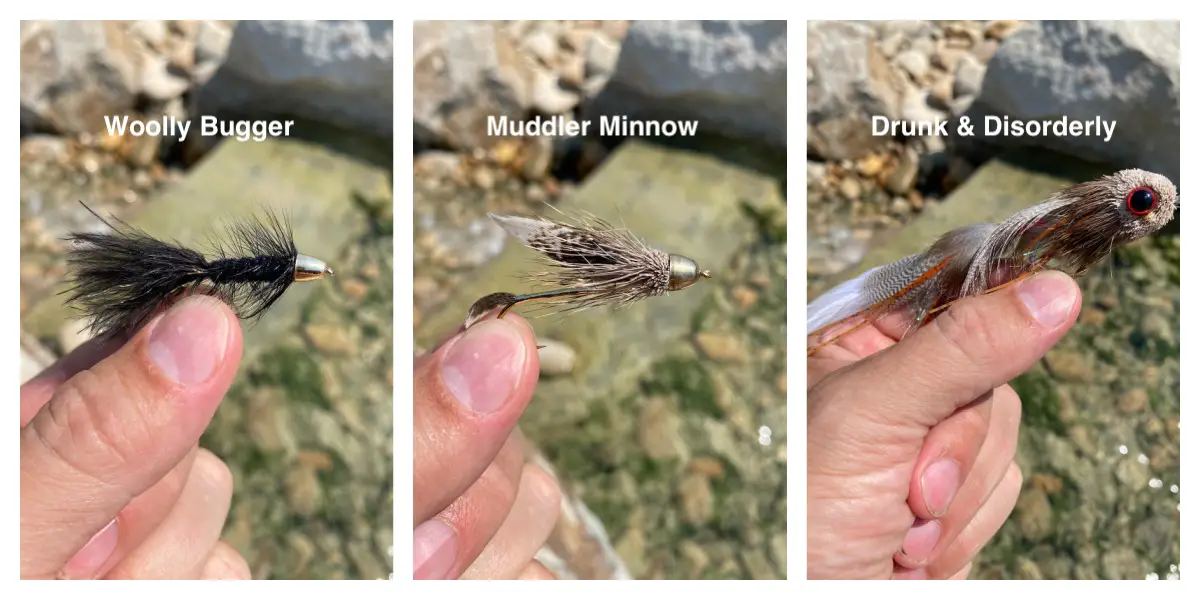
Streamers for Brown Trout
Streamers are synonymous with browns. Yes, rainbows and brookies will take them too, but monster brown trout are usually caught with streamers. The reason is that as brown trout mature they become much more piscivorous, meaning they eat other fish.
This is where streamers can shine.
Woolly Bugger
I’ve mentioned before that I’ve heard plenty of fly anglers claim that if they had to choose a single fly pattern to use for the rest of their lives, it’d be the woolly bugger.
It can be used to imitate a litany of critters, including leeches, minnows, crayfish, and more.
Black is the most popular color, and I’ve had the most success with it, but white is often used too.
There’s a saying, “Dark day, dark fly. Light day, light fly.” Experience has taught me that this is true some of the time, but it’s not a hard rule.
I generally retrieve this pattern with quick strips, but you should experiment. Sometimes the trout will take the fly as it falls, and sometimes as its accelerating.
Sizes 4-10 are ideal, depending upon the size of fish you’re chasing. You can get a nice assortment on this page at Amazon.
Muddler Minnow
Here’s another streamer that many fly fishers would take over all others if forced to choose. It was originally tied in Minnesota to imitate sculpin, and is now used around the world as a general minnow imitation.
The traditional muddler minnow pattern has a deer hair head, which makes it more buoyant than the conehead version I’m holding in the above picture. I prefer the traditional version because it moves a lot of water (which attracts predatory fish), but I use the conehead version in a pinch if I’m casting with floating line.
If you want a streamer to swim deeper, I generally recommend that you use full sinking line or a sink-tip variation instead of a beadhead or conehead fly pattern.
You’ll generally find this fly in sizes 4-10, but you could tie smaller versions if you’d like.
This fly is going to catch you fish in brown trout waters. You can find the traditional version here.
Drunk and Disorderly
The drunk and disorderly fly pattern is articulated, meaning it’s two sections that are joined together, giving it a hinge-like action in the water. It’s really a sight to behold–it looks just like a wounded baitfish.
The deer hair head moves a lot of water (like the muddler minnow), which fish can sense with their lateral line. That’s one reason this fly will work even in low-light conditions.
Don’t try to cast this beast of a pattern with a 5-weight fly rod. I recommend a dedicated streamer rod if your finances allow. Specifically, a fast-action 7-weight rod. An 8-weight would work too, but it’s potentially overkill.
This pattern is what you use when you’re chasing monster brown trout. You won’t catch as many browns, but everything you catch will be sizeable.
Kelly Galloup, who’s arguably the king of streamers, says in his excellent book to use your rod to pull big streamers through the water, rather than stripping.
I can tell you that once I started doing this, my success rate increased because I could give the fly more deliberate action.
You can find the version I recommend here.
With a little fly pattern experimentation on your home waters, you’ll be landing big brown trout like this one I’m holding.
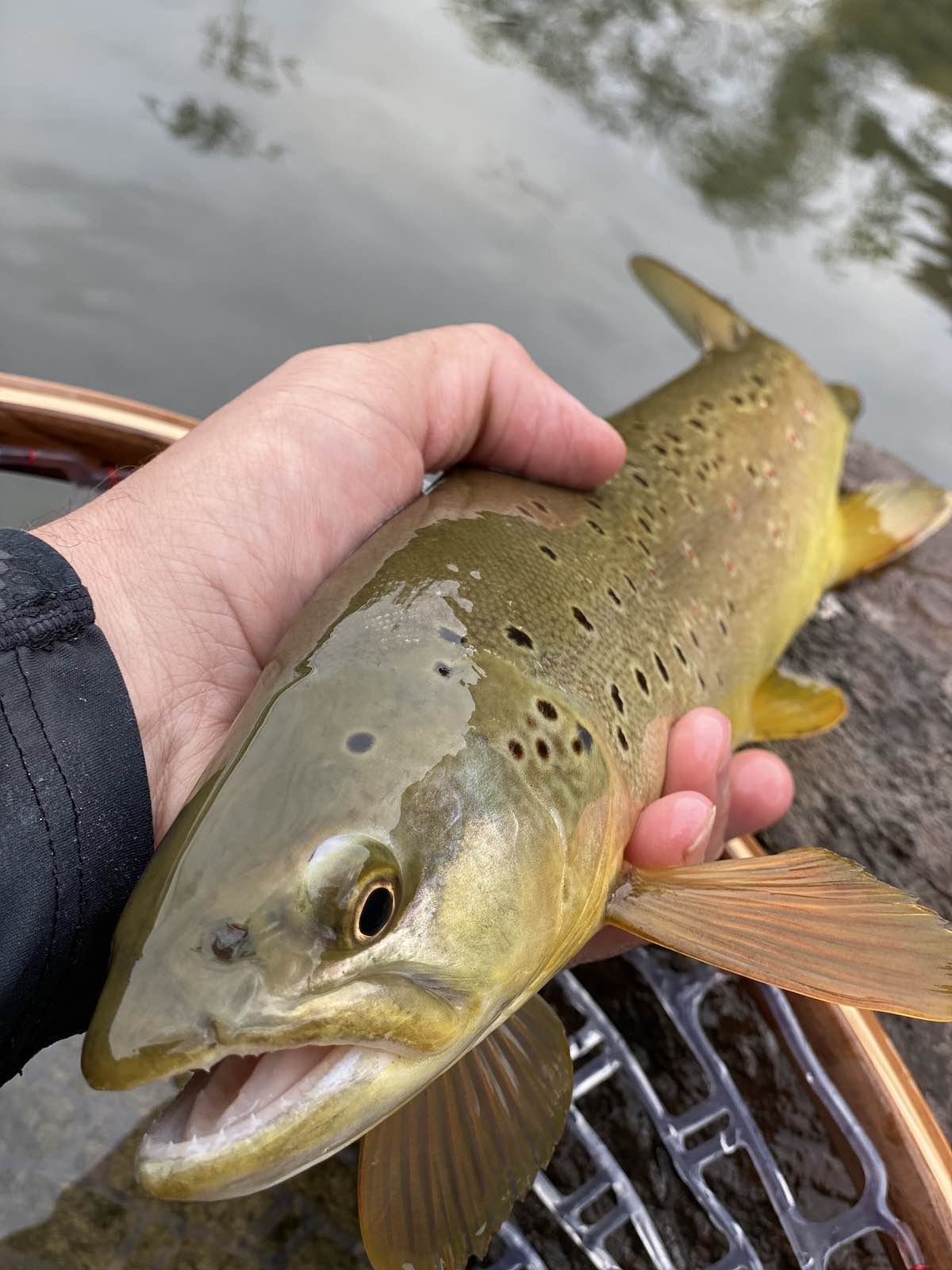
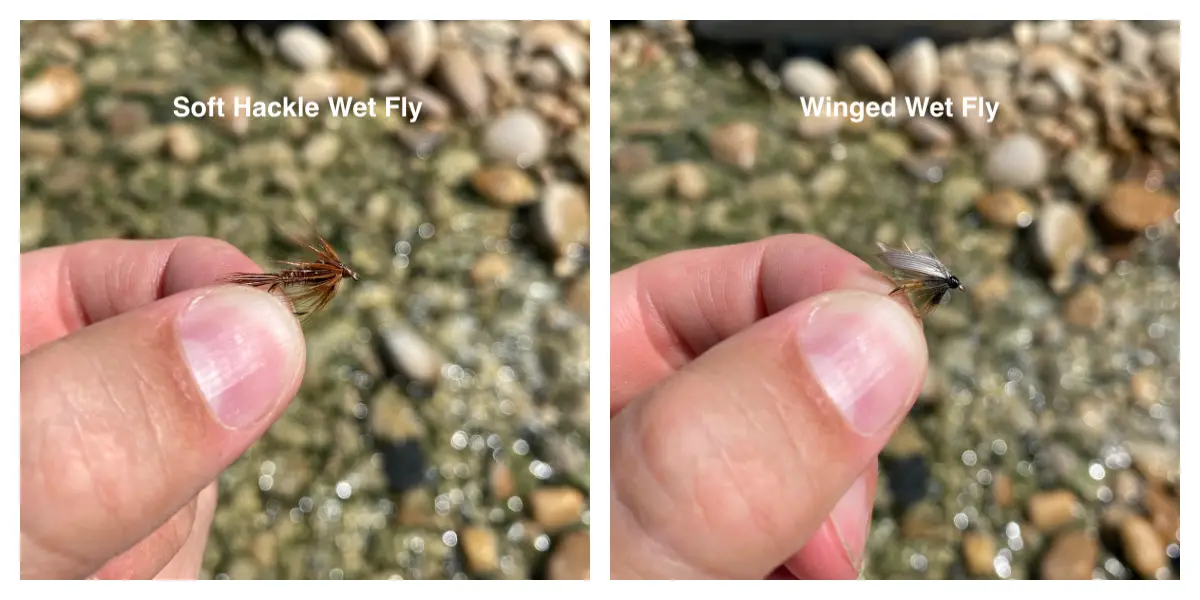
Wet Flies for Brown Trout
Over the last few decades, wet flies have fallen out of favor with fly anglers. But, if you’re a traditionalist, you may want to try them.
I’ve caught plenty of browns swinging wet flies, and I’ve found that the non-winged patterns are far more effective than the winged patterns. This is based upon my personal experience.
Specifically, by non-winged patterns, I’m talking about soft hackle wet flies. The beauty of soft hackle is that it moves freely, often resembling gills or fins. It makes the fly come alive.
Some traditional wet fly specialists, like Davy Wotton, believe that beadhead wet flies are a travesty. But, you need to make up your own mind.
You want your wet flies to move a lot of water (are you sensing a pattern here?), and to look alive. When you’re casting dry flies, you want your flies to move only with the current. On the contrary, you want to give your swung wet flies plenty of movement.
Brown trout will often hook themselves by grabbing your wet fly and turning away, so there’s usually no need for a strong hookset. If you don’t heed this advice, you’re much more likely to snap your tippet.
Summary
My experience chasing brown trout has taught me that these flies work, and they work well. They’re the best of the best.
Pick up a few of the patterns I recommend and experiment with them on your home waters.
If (when) you land a few nice browns, e-mail me a picture of your catch!
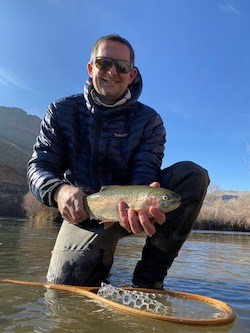
About the Author
My name's Sam and I'm a fly fishing enthusiast just like you. I get out onto the water 80+ times each year, whether it's blazing hot or snow is falling. I enjoy chasing everything from brown trout to snook, and exploring new waters is something I savor. My goal is to discover something new each time I hit the water. Along those lines, I record everything I learn in my fly fishing journal so I can share it with you.
Follow me on Instagram , YouTube, and Facebook to see pictures and videos of my catches and other fishing adventures!
